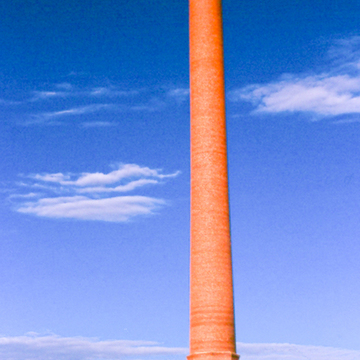Although dwarfed by the 1,245-foot-high International Nickel Company smokestack in
Emil Bruderlin, a structural engineer, designed this 365-foot-high stack to disperse the noxious fumes created in the processing of gold and silver ores after area residents and farmers claimed that a shorter (85-foot) stack built in 1901 was ineffective. (The short stack was razed in the late 1920s to provide brick for homes in Salida.) It took two years, $43,000, and 264 railroad cars of brick to build the new stack. After the smelter closed in 1920, this stack twice came within twenty-four hours of demolition before being rescued by the Salida Museum Association. It is built of large, glazed face bricks fronting common bricks strengthened with steel rods on a four-tiered octagonal brick base. The concrete foundation is sunk 32 feet into the ground. The stack is 42 feet wide at the base and 17 feet wide at the top, where the lip of the stack has embedded silver dollars. Eighty acres of furnaces, blowers, and railroad facilities which surrounded the stack are mostly gone, as is the surrounding community known as Smeltertown.














